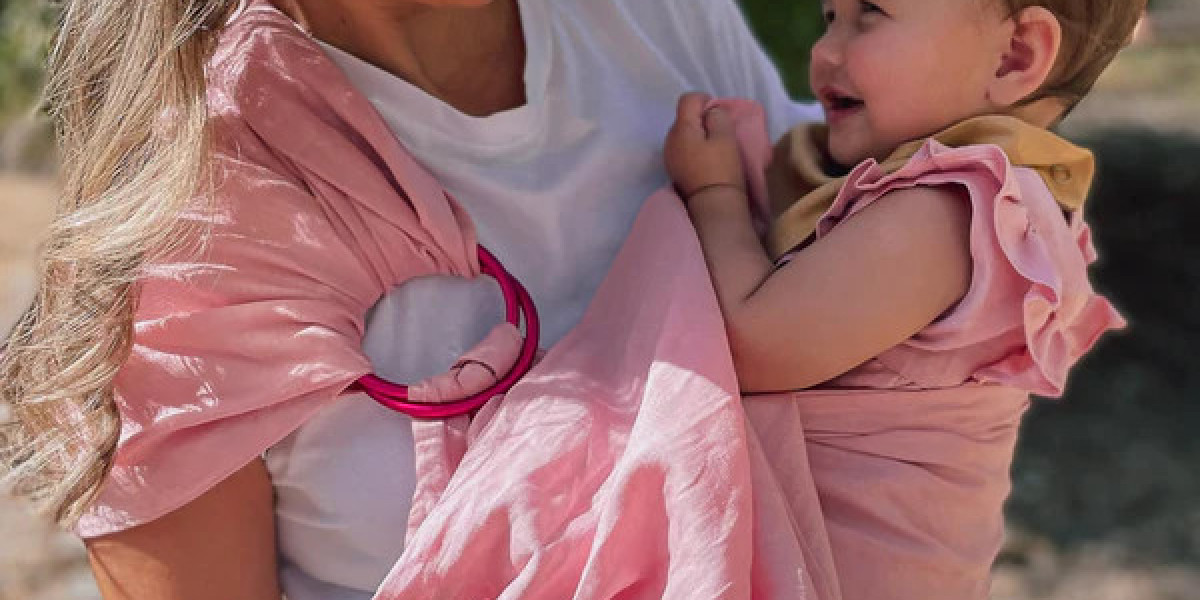Babywearing has been practiced for centuries across various cultures, offering a multitude of benefits for both parents and infants. Among the various methods of babywearing, the baby sling stands out as a popular choice due to its simplicity, versatility, and comfort. This article will explore the different types of baby slings, their benefits, safety considerations, and tips for choosing and using them effectively.
Understanding Baby Slings
A Baby Sling is a piece of fabric that is used to carry a baby close to the caregiver's body. Unlike structured carriers, slings are typically made from a single piece of cloth, allowing for a snug and customized fit. There are several types of baby slings available, each with its unique features:
Ring Slings: These consist of a long piece of fabric with two rings sewn into one end. The fabric is threaded through the rings to create an adjustable pouch for the baby. Ring slings are popular for their ease of use and adjustability, making them suitable for newborns and toddlers alike.
Pouch Slings: These are tube-like pieces of fabric worn over one shoulder. Pouch slings are often sized to the wearer, providing a fixed fit that can be less adjustable but very convenient for quick use.
Wrap Slings: Wrap slings are long pieces of fabric that are wrapped around the body and tied in various ways to create a secure hold for the baby. They offer a high level of adjustability and support, making them ideal for prolonged use and different carrying positions.
Benefits of Baby Slings
Using a baby sling offers numerous
benefits for both the caregiver and the baby, fostering a close bond and providing practical advantages in daily life.
Promotes Bonding and Emotional Development
One of the most significant benefits of baby slings is the promotion of bonding between the caregiver and the baby. The physical closeness encourages the release of oxytocin, often referred to as the "love hormone," which strengthens the emotional connection. This closeness also provides a sense of security for the baby, aiding in their emotional development and reducing stress.
Supports Physical Development
Baby slings help support the physical development of infants. When used correctly, slings provide proper support for the baby’s spine and hips, which is crucial for healthy development. The upright position can also aid in digestion and reduce colic symptoms by helping to keep the baby’s stomach in an optimal position.
Convenience and Hands-Free Mobility
For caregivers, the convenience of having their hands free while still keeping their baby close is invaluable. Whether doing household chores, shopping, or attending to other children, a
baby sling allows caregivers to move freely without the need for bulky strollers or other equipment. This hands-free mobility makes daily tasks more manageable and enables caregivers to maintain an active lifestyle.
Breastfeeding On the Go
Many baby slings, particularly ring slings and wrap slings, facilitate discreet breastfeeding. The fabric can be adjusted to support the baby in a comfortable feeding position, allowing caregivers to nurse while walking or performing other activities. This convenience can be particularly beneficial during outings or travel.
Versatility in Carrying Positions
Baby slings offer versatility in carrying positions, accommodating the changing needs of the growing baby. Newborns can be carried in a cradle or tummy-to-tummy position, providing a secure and cozy environment. As the baby grows, they can be positioned on the caregiver's hip or back, allowing for greater interaction with their surroundings while still feeling secure.
Safety Considerations
While baby slings offer numerous benefits, ensuring the safety of the baby is paramount. Here are some essential safety tips to consider:
Proper Positioning
Ensuring that the baby is in a safe and ergonomic position is crucial. The baby's face should always be visible, and their airways should be clear. The T.I.C.K.S. rule can help caregivers remember the key points:
Choosing the Right Fabric
The choice of fabric is important for both comfort and safety. Breathable fabrics like cotton, linen, or blends are ideal for keeping the baby comfortable and preventing overheating. The fabric should also be durable and free from any defects.
Size and Adjustability
Ensure the sling is appropriately sized and adjustable to fit both the caregiver and the baby comfortably. An ill-fitting sling can lead to discomfort and potential safety hazards.
Regular Inspections
Regularly inspect the sling for signs of wear and tear, such as frayed edges or weakened seams. Replace the sling if you notice any damage that could compromise its integrity.
Choosing the Right Baby Sling
Selecting the right baby sling depends on several factors, including the caregiver’s lifestyle, the baby's age and weight, and personal preferences. Here are some tips to help you make an informed decision:
Consider the Baby's Age and Weight
Different slings are designed to support various weight ranges and age groups. For newborns, a ring sling or stretchy wrap might be more suitable due to their snug fit and support. As the baby grows, a woven wrap or a ring sling with a higher weight capacity can provide better support.
Evaluate Ease of Use
Consider how easy the sling is to put on and adjust. Ring slings and pouch slings are typically quicker to use, which can be beneficial for caregivers who need to frequently take the baby in and out. Wrap slings, while offering more versatility, require more practice to master the wrapping techniques.
Assess Comfort for Both Caregiver and Baby
Comfort is key for both the caregiver and the baby. Look for slings with padded shoulder straps or wide fabric bands that distribute weight evenly. The fabric should be soft yet supportive, ensuring that both the caregiver and baby remain comfortable during use.
Check for Versatility and Style
Many caregivers appreciate slings that offer multiple carrying positions. This versatility allows the sling to adapt to the baby’s developmental stages and the caregiver’s activities. Additionally, baby slings come in various colors and patterns, allowing caregivers to choose a style that suits their personal taste.
Using a Baby Sling Effectively
To get the most out of your baby sling, consider these practical tips:
Practice and Patience
Using a baby sling effectively requires practice, especially with wraps that involve more complex tying methods. Practice with a doll or pillow to get comfortable with the technique before using it with your baby. Patience is key; it may take several tries to perfect your method.
Seek Guidance and Support
Don’t hesitate to seek guidance from experienced babywearers or consult instructional videos and tutorials. Many communities have babywearing groups where you can get hands-on help and advice. Online forums and social media groups can also be valuable resources.
Adjust for Comfort
Regularly check and adjust the sling to ensure both you and your baby remain comfortable. The baby’s position might shift during use, so small adjustments can help maintain the correct posture and prevent discomfort.
Stay Attentive
Always stay attentive to your baby’s needs and cues. Regularly check their positioning, especially if they fall asleep in the sling. Being mindful of their comfort and safety ensures a positive babywearing experience for both of you.
Conclusion
Baby slings offer a wonderful combination of comfort, convenience, and bonding opportunities for caregivers and their babies. By understanding the different types of slings, the benefits they provide, and the safety considerations involved, caregivers can make informed choices that enhance their babywearing experience. With the right sling and proper technique, babywearing can become a cherished practice that supports the physical and emotional well-being of both caregiver and baby.









